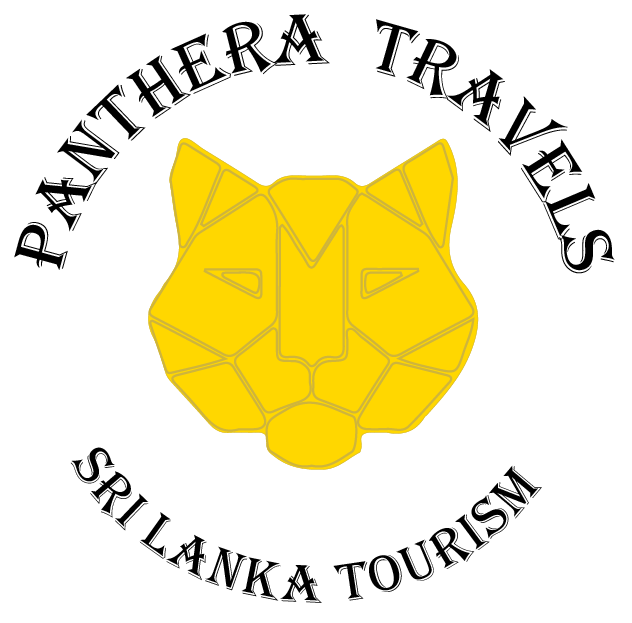Shopping in Colombo
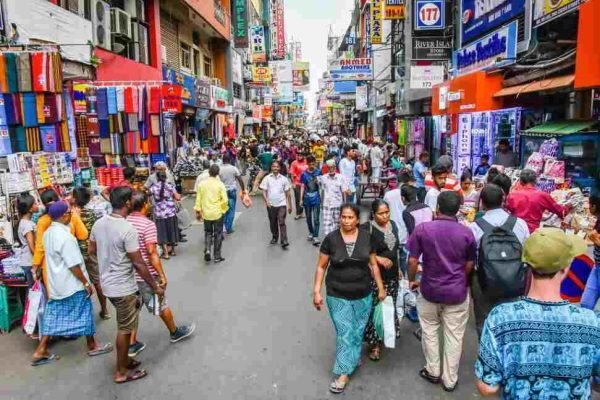
Location : Western province, Sri Lanka
Coordinates : 6°56′04″N 79°50′34″E
Elevation : 1 m
Avg temperature : 25c to 35c
Humidity : 75% to 85%
Governing body: Colombo Municipal Council
Population :752,993
Size: 37.31 km2
By the early 15th Century, Sri Lanka had already gained a rich legacy dating back to many centuries when traders from both East and West were drawn to our shores for its precious gemstones, flavourful spices, tea, handicrafts, indigenous medicine, carved ivory, and exotic fauna. These links were enabled by the island’s strategic location on the ancient Silk Route and social patterns that encouraged financially beneficial contacts with the broader world. Today, the country is known for its Ceylon Tea, Ceylon Spices, Ceylon Blue Sapphires, Ceylon handicrafts, and indigenous medicine, and it is the world’s best tourist destination. Yet our potential reaches far within; Sri Lanka is also a leading designer and manufacturer of ethical and sustainable apparel for global brands and a rising destination knowledge services outsourcing.
We have written a separate article about the Colombo City tour for those interested; the link follows immediately.
https://pantheratravels.com/colombo-city-tour/
Shopping in Colombo is a wholesome experience, with the city offering a luxurious lifestyle and shopping, but tourists can also dive into the markets. Each market is dedicated to art, handicrafts, apparel, and jewelry! Shopping in Colombo provides an incredible encounter with trendy and attractive styles, which is worth the time and money. So, let’s glance at some quirky shops and malls in Colombo to shop your hearts out.
What you can buy in Colombo
Gems (Precious stones)

‘The Gem shops in Colombo are a well-known destination for purchasing incredible gems and stones to suit your wardrobe. The gem traders are famous for their custom-made Jewellery, allowing the customers to select their perfect stone and have it carved into a magnificent shiny piece of jewelry at an economical price! Shopping in Colombo is much fun with some shimmery jewels in your pockets.
Sri Lanka’s gem industry has a very long and colorful history. Sri Lanka was affectionately known as Ratna-Dweepa, which means Gem Island. The name is a reflection of its natural wealth. Marco Polo wrote that the island had the world’s best sapphires, topazes, amethysts, and other gems.
Today, around 200 minerals have been classified as gemstones due to their beauty, durability, rarity, or a combination of some attributes, which should be fulfilled to make a mineral worthy of being classified as a gemstone. Of these gemstones, around 75 varieties have been mined or found in Sri Lanka. Although exploitation of Sri Lanka gemstone deposits has been going on for many centuries, it’s the only reason that effort has been made to study the industry itself, the locations of possible gemstone deposits, and most importantly,
Sri Lanka, famed for being the Isle of Gems, has many gems and jewelry available in retail shops in Colombo. Visit the gem shops and be amazed by the collection of beautiful gemstones cut and polished, from the rough stones to the beautiful eyes that would glisten from a distance. See the Royal blue sapphire that paved the way for Sri Lanka’s gem industry after a sapphire was presented to the Queen of England in 1981. This stone eventually became a part of the engagement ring that Prince Charles had used when he proposed to Lady Diana Spencer.
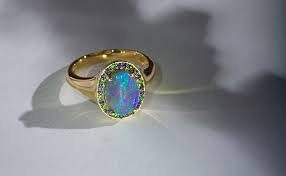
Popular gems in Sri Lanka and Colombo are Sapphires, Star Sapphires, Cat’s Eyes, Rubies, Star Rubies, Alexandrite, and many other semi-precious stones. Apart from the blue sapphires, the pink and yellow sapphires are also famous. Be amazed by the beautiful gemstones of Sri Lanka, where collections are available in retail shops in Colombo and other cities. Learn the process of gem mining, cutting, and polishing rough stones into the beautiful eyes that glisten from a distance.
If you would like to have more details about Gems and Jewelry in Sri Lanka, the website link for Gem and Jewelry Authority in Sri Lanka follows immediately,
Ceylon Tea

In over one hundred and fifty years, the name Ceylon had become synonymous with the world’s finest tea. In the world’s eye and tongue, Ceylon was tea, and tea was Ceylon. What Rolls Royce is to cars, Rolex is to watches, Havana is to cigars, Scotland is to whisky, and Ceylon is to tea. The legendary lion of the Sri Lankan flag was introduced to the Ceylon Tea logo to guard this commitment – the symbol of quality.
As it has been known since the 19th century, Ceylon tea has been the base tea of choice for most tea manufacturers worldwide. Sri Lankans believe their groundwater has a magical quality, not only for growing great tea plants but also for brewing them.
Types of tea you can buy in Colombo:

Silver Tips: The finest buds of a particular cultivar that turn velvety-silver when dried. They offer the gentlest fragrant brew, are extremely rare, and are usually handpicked before sunrise.
OP (Orange pekoe): Contrary to popular belief, Orange Pekoe refers to a leaf size and not a flavor. Orange Pekoe tea has a strong scent and a smooth flavor with a sweet finish.
FBOP (Flowery Broken Orange Pekoe): Similar to Broken Orange Pekoe but bigger. It is a coarser, semi-leaf tea with a small portion of tips that produce a mild yet flavourful brew.
BOP (Broken Orange Pekoe): A popular leaf size and the primary broken grade. This tea infuses faster than whole-leaf varieties, giving way to a liquor that strikes the right balance between taste and strength.
BOP1 (Broken Orange Pekoe 1): A well-twisted semi-leaf tea, generally from the low country. It has a uniquely delicate and malt-like taste with an aftertaste that resembles caramel.
BOPF (Broken Orange Pekoe Fannings): Uniform, black-leaf tea particles smaller than BOP but without tips, hailing from higher elevated regions. Bright in color with a pungent taste that retains most characteristics of BOP. Ideal for tea bags.
Pekoe: Pekoe refers to tea made from the just-unfurling buds of the tea bush. Pure pekoes are tightly rolled into a near-spherical shape and need extreme care when manufacturing.
DUST 1: The smallest of particles that infuse swiftly, resulting in optimum strength, color, and body. It is most suited for commercial brewing.
FBOPF EX.SP. (Flowery Broken Orange Pekoe Fanning Extra Special): A whole-leaf black tea that tends to be expensive due to the abundance of leafy, long tips. Yields an exquisite cup with a mild caramel flavor.
Golden tips: Very rare pale golden velvety whole buds taken from select plants have a delicate brew with a mild floral bouquet.
FF1 (Flowery Fannings 1): Short wiry particles mixed with medium-sized curly leaves and comprising of some tips.
Gunpowder: This green tea dates back to the 1800s, and the name originates from the fact that the tea is rolled very tightly into small pellets, befitting ammunition used in old muskets.
Spices
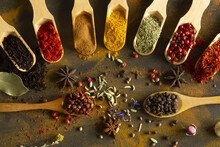
You can see and buy spices from Sri Lanka, including Ceylon Cinnamon, Ceylon Pepper, Ceylon Cloves, Ceylon Cardamom, Ceylon Nutmeg, and mace and vanilla. Sri Lanka is also home to a range of additives and herbs, including a variety of chilies, coriander seeds and leaves, curry leaves, cumin, fennel, fenugreek, ginger, mustard, tamarind, and turmeric, among others. Sri Lanka has been famous for its exquisite range of spices for centuries. These spices are mainly behind the mouth-watering flavors of Sri Lankan cuisine, be it curry of vegetables, red or white meat, fish or seafood, or even some sweet meat.
Today, the Sri Lankan spice and concentrate industry comprises many products, ranging from bulk spice products like true cinnamon to value-added essential oils. Smallholders dominate the sector, and over 70% of cultivated land is smallholdings and home gardens. Sri Lanka exports around 30,000 tons of various kinds of spices annually. Of Sri Lanka’s exports falling under other agriculture commodities, 56% comprises spices, allied products, and the essential oil sector, while 55% comprises cinnamon and related product exports.
Ceylon Spices are more than just flavor agents. Most carry critical medicinal properties and are widely used in alternative medicine and pharmacology. Some of them, like true cinnamon and cloves, are ingredients used in the perfume and cosmetic industries mainly because of their distinctive fragrance. Sri Lanka also produces and exports Oleoresins, which are mixtures of volatile and non-volatile botanicals extracted from such Sri Lankan spices as Black Pepper, Cardamom, Nutmeg, Ginger, Cloves, Garcinia, Lemongrass, and Cinnamon. Sri Lanka supplies conventional and organic spices, essential oils, and oleoresins.
The weather and soil significantly affect the taste of spices and the level of alkaloids and flavonoids responsible for each spice’s flavor, zest, and aroma. Sri Lankan Spices are identified with the unique geographical indication of Ceylon Spices due to their distinct flavor and aroma, placing Sri Lanka on the world map since the 14th Century.
Handicraft

In Sri Lanka, famous handicrafts include gold and silver jewelry, lace work, pottery and ceramics, wood carving, metalwork, brass, lacquer, batik, and ceramics. Sri Lanka has a large variety of traditional handicrafts. Sri Lankan handicrafts perfectly reflect the country’s history and culture. The crafts comprise a beautiful combination of traditional and modern designs, intricate detailing, and vibrant colors.
Woodcarvings

Elephant wood carvings are a famous Sri Lankan handicraft made from local hardwoods and used in religious and decorative settings. They depict elephants in various poses and are decorated with intricate patterns, often painted in vibrant colors. Traditional techniques have been passed down through generations and can take months or years. Highly sought after by collectors and art lovers, Sri Lankan Elephant wood carvings are also commonly used as gifts and decorations in the country.
Experience the rich cultural heritage of Sri Lanka with our stunning collection of handcrafted wooden traditional masks. These masks are functional and beautiful works made by skilled artisans using traditional techniques. Each mask tells a unique story and represents Sri Lanka’s cultural heritage.

From fierce warriors to peaceful gods, our collection includes various designs to suit any taste. These masks are made from high-quality wood, ensuring they are durable and long-lasting. Add a touch of Sri Lankan culture to your home or gift a special someone with a unique piece of traditional art today.
Wood types: Teak, Mahogany, Maara (Samanaya saman), Balsa
Colors: Black, Brown, and multi-colors painted for Masks
Batik

Batik shops in Colombo are known for selling original Batik materials that have been an integral part of Sri Lanka’s traditions & culture for years. It offers clothes, wall hangings, and more, all made with exquisite Batik designs. These are some of the most fascinating things to buy in Sri Lanka that will tempt you to make them a part of your home décor.
Velvet paintings
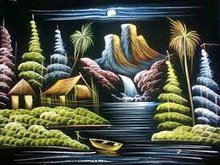
Ceylon hand paintings on velvet are a unique and exquisite form of art that originated in Sri Lanka. These paintings are created by skilled artisans who use traditional techniques and modern materials to create stunning works of art. The paintings are typically done on a velvet canvas using vibrant colors and intricate designs that depict scenes from nature, mythology, and culture.
The use of velvet adds a luxurious texture and depth to the paintings, while the handcrafted nature of the art ensures that each piece is one-of-a-kind. Ceylon hand paintings on velvet are a beautiful addition to any home or art collection and are a testament to the rich cultural heritage of Sri Lanka.
Material: Black Velvet Canvas
Hand-painted Canvas

When shopping in Colombo, if you’re a painting lover, you can visit a place near the museum by the road. You can choose different forms of paintings according to your taste.
Where can you buy all that stuff?
In Colombo, you can find individual shops for each category, emporiums, and shopping malls to satisfy your needs. Pettah Bazar (Colombo local Bazar) is also very famous among the Sri Lankan people. Pettah Bazar is full of unbranded, necessary fancy materials and clothing. You can see a lot of vendors at crossroads and on main streets. It is a highly crowded, noisy place, especially for locals. You’ll get all the good and evil there as it is full of locals. But many tourists also like to wander around. In the Bazar, you can find a variety of goods, but they are inexpensive, low quality, and no guarantee.

Note: If you visit Colombo Bazar, please pay extra attention to your belongings.
Colombo City Centre and One Galle face

The most famous shopping places in Colombo are the Colombo city center and the One Galle Face Mall. The mall offers a great experience while traversing it, providing a fantastic range of premium brands. The mall also inhabits a seemingly vast series of restaurants serving almost all the cuisines. A multiplex cinema with six screens is also housed within the mall and is designed to offer a great cinematic experience to visitors. Colombo city center is thus a must-visit as it presents an excellent opportunity to pamper yourself with splendid food and cinematic entertainment while on a shopping spree in Colombo.
Shopping is a happy journey consisting of many pit stops, ups and downs, and traveling through unique and creative places. Shopping in Colombo is equivalent to riding a roller coaster: adventurous, fun, and charismatic.
Delightful Cuisine
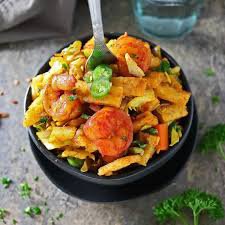
Colombo is a paradise for food lovers, offering various culinary delights. The city’s restaurants cater to all tastes and preferences, from traditional Sri Lankan dishes to international cuisines.
Don’t miss the chance to try local favorites such as hoppers, kottu roti, and string hoppers. For those with a sweet tooth, Colombo is famous for its mouthwatering desserts like Wattalappam and Faluda.
Tips for Colombo shopping
-
- Drink bottled water
-
- Ask permission before photographing someone.
-
- Be polite! Sri Lankans will often approach you and ask your personal questions: “Where are you from? Where are you going? Are you married? How old are you?”. However, most people do not have bad intentions; they try to start a conversation or improve their English skills.
-
- Do it yourself, or if you need assistance, refer your tour guide.
-
- Clothing made of cotton material is suitable for city visits
-
- Sunglasses and hats are recommended to protect yourself from the sun.
Don’t:
-
- Alcohol and cigarettes in public
-
- Alcohol consumption on the Full-Moon Poya and holidays is prohibited. Alcoholic beverages are not available in hotels or bars on these days. Adhere to this rule and stay sober.
-
- Kissing in public
-
- Don’t get caught in the touts.
-
- Giving candy or gifts to begging children
-
- Do not drink tap water

Hope you enjoyed the article. You can scroll down to our featured posts. Before you go to featured posts, Subscribe to read our new posts. We never use this email for promotions and offers. Our only purpose is for you to read our valuable content.
Featured Blog Posts

- Featured, Places

- Featured, Places

- Featured, Travel tips

- Featured, Places

- Activities, Featured
